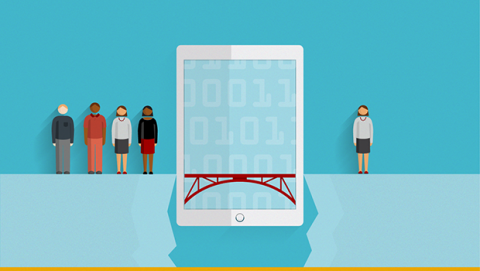Twenty years ago, Google revolutionized search with a simple idea: Pages that have many links going to them are likely to be more useful than pages that don’t. Blockchain uses an equally simple idea that may be just as revolutionary: If every member of a large network has the same data, along with a complete record of any changes made to that data, the data will be impossible to falsify.
That simple idea underlies cryptocurrencies such as bitcoin and ether, but it has wide applications elsewhere, including in enterprise IT, says Victor Wong, co-founder and CEO of BlockApps, a platform for creating and managing blockchain applications.
If you’ve always been a bit confused about how blockchain actually works, Wong provides a useful explanation: “You have a network of computers and when a transaction comes, that network looks at the transaction and verifies that it’s valid based on a set of rules embedded in the network. A simple example might be a funds transfer. Does this person have enough assets to make the transfer? If a majority of the network agrees that they do, then it goes into a database that is synced across the entire network. The network itself verifies the data.”
Another way to think of the concept: Blockchain could do for transactions what the Internet did for communications, as Hu Liang, senior managing director and head of the Emerging Technologies Center at State Street, told attendees at the recent MIT CIO Symposium. (State Street is testing blockchain for securities lending.) While bitcoin came from a desire for a currency without borders, technologists pulled blockchain out of that work and continue to apply it to problems and issues beyond currency.
BlockApps CEO Wong says there are three main areas where blockchain makes a huge difference:
1. Cryptocurrency transactions
This, of course, is what most people think of when they think of blockchain. Hundreds of cryptocurrencies exist today – not only bitcoin and ether, but also monero, ripple, zcash, and even “potcoin,” intended to serve the legalized cannabis industry. With many billions of dollars of cryptocurrency in circulation, and more than 100,000 companies, including some quite large ones, accepting various cryptocurrencies, this trend will affect many types of enterprises. While financial services companies often dominate blockchain discussions, organizations in travel, telco, and government are actively experimenting, as Red Hat Chief Technology Strategist E.G. Nadhan has written.
2. Transactions between organizations
How can blockchain help support transactions between organizations? Organizations making transactions typically do it one of two ways. Either they use a third party to authenticate and verify the transaction, for example when banks use the Automated Clearing House (ACH) for funds transfers. Or, they do authentication and verification on their own, but that usually involves manual processes and is labor-intensive and therefore costly. Blockchain reduces costs by eliminating the need for third parties and for labor-intensive manual verification processes, Wong says. For this reason, blockchain looks poised to play a role in high-volume transactions between Internet of Things devices, as blockchain industry-watcher Don Tapscott has noted.
3. Workflow within large organizations
Blockchain’s ability to provide authentication and verification across large networks creates efficiencies when different departments or divisions of a large organization work together on projects. “We did a prototype with John Hancock last year where they were trying to onboard mortgage customers,” Wong says. “Depending where the customer was from there were slightly different rules. Because there wasn’t one area where all this information was, the process could take up to a year. With blockchain, they estimate they can do it within a couple of weeks.”
Wong says that once most organizations begin using blockchain, they find more uses for it. “Blockchain provides a transactional layer, and once you have that layer in place, companies start to think of the many different areas in the organization where they can leverage it,” Wong says. “We think about it very broadly in the enterprise context, for digital assets, securities, physical assets, even things like medical records and identity.” (For more detail, read how Dr. John Halamka, CIO at Boston's Beth Israel Deaconness Medical Center, explained Blockchain's medical records potential in a recent Wired article.)
Keep in mind, we’re still in the very early days for blockchain use. “It’s open source and open standards,” Wong says. “It’s evolving very quickly.”




